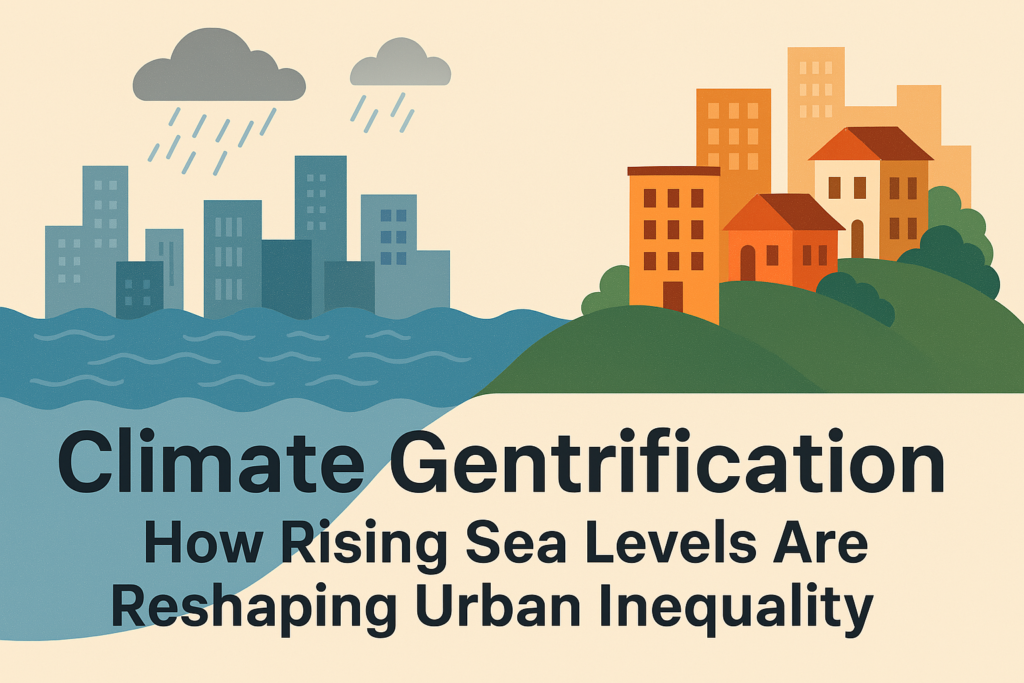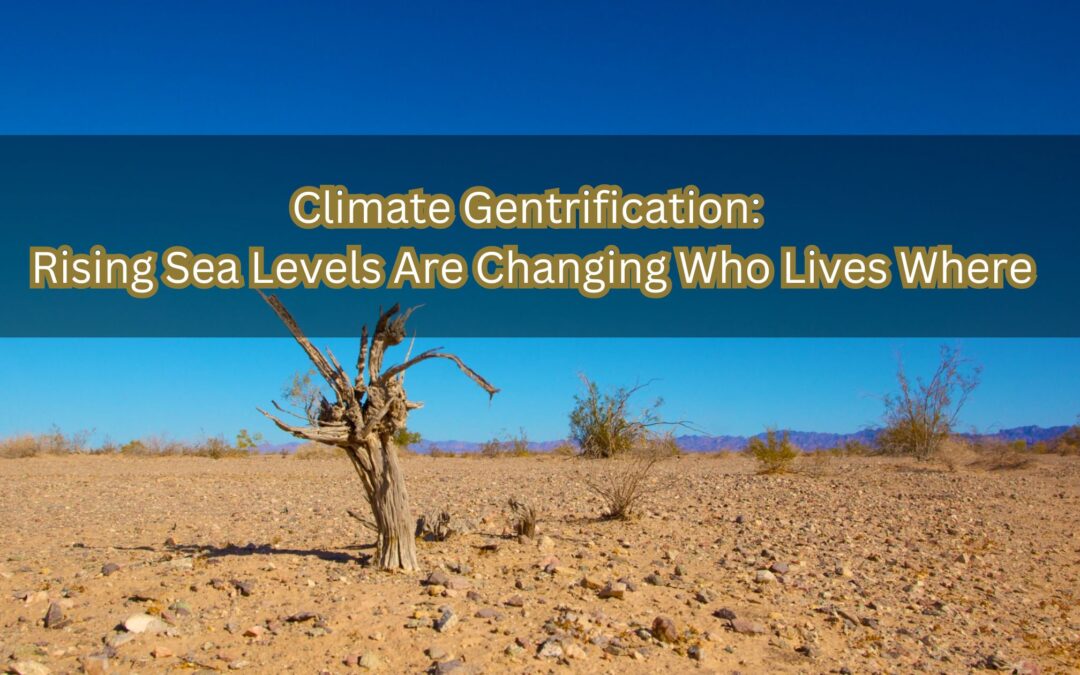Let’s talk about something you might not have heard much about—but it’s reshaping cities all over the world.
Climate gentrification. Yeah, it’s a real thing. And it’s happening right now.
As climate change gets more intense—bringing rising sea levels, stronger storms, and more frequent flooding—it’s not just an environmental problem anymore. It’s a social and economic one too. We’re seeing a massive shift in urban inequality, and it’s tied directly to the changing climate.
What Is Climate Gentrification?
So, what exactly is climate gentrification? Simply put, it’s what happens when climate hazards like flooding or extreme weather make certain areas, especially those close to the coast, too risky to live in. Wealthier people who can afford to move start buying up higher ground. And where is that? Usually, in lower-income neighborhoods that have been overlooked for years.
As property values rise in these higher-elevation areas, long-time residents—often immigrant or minority communities—are priced out. Rent goes up. Taxes go up. And the people who built those neighborhoods are pushed out. It’s gentrification, driven by climate.
Climate Change Is Reshaping Cities
Let’s look at Miami, Florida—one of the clearest examples of this. Areas like Little Haiti, once considered “undesirable” due to economic challenges, are now hot real estate because they sit on higher ground. Developers and investors are buying up land fast, and longtime residents are losing their homes.
And it’s not just Miami. This is happening in New Orleans, San Francisco, New York City, and even places like Jakarta and Manila. As sea levels rise, coastal areas flood, and the pattern repeats.

Urban Inequality Is Getting Worse
This isn’t just about where people live. It’s about who gets protected and who gets pushed aside.
Low-income communities often lack the resources, political influence, or legal protections to fight back. And when they’re displaced, they usually end up in cheaper—but more dangerous—areas. These new areas often have weaker infrastructure, less access to clean water, and greater exposure to climate threats.
It’s a cycle that keeps repeating—unless we step in and change the way we plan our cities.
What Can We Do About It?
To fight climate gentrification, we need fair urban planning. That means:
- Investing in community land trusts so neighborhoods can own their future
- Enforcing affordable housing protections in areas at risk of climate-driven displacement
- Involving local residents in climate resilience planning—because they know their communities best
- Prioritizing social equity when designing climate solutions
We can’t solve climate change by ignoring the people most affected. Sustainability must include justice.
The Bottom Line
Climate gentrification shows us how deeply connected climate change is to urban inequality. Rising sea levels and extreme weather aren’t just changing landscapes—they’re changing lives.
If we don’t act now, millions could be displaced—not by nature, but by systems that favor profit over people.
👉 Take Action Today!
Want to dive deeper into climate gentrification and find out how we can build more just, resilient cities? Visit EAT Community for articles, webinars, and real solutions.
Also check out these other helpful resources:
- Forest Carbon Sequestration: A Natural Solution to Climate Change
- What Is Climate Gentrification?
- 🌍 NRDC: How Climate Change Fuels Gentrification
- The Crucial Role of Biodiversity Conservation in Thriving Urban Ecosystems
- Creating the Equitable Cities of the Future | World Resources Institute
- 🏘️ Brookings Institution: How Climate Risk is Shaping Real Estate
- 🌆 Urban Displacement Project: Climate Change and Displacement
- 🌱 Yale Environment 360: The Rising Threat of Climate Gentrification
References
- Hino, M., Field, C.B., & Mach, K.J. (2017). Managed retreat as a response to natural hazard risk. Nature Climate Change, 7, 364–370.
- Keenan, J.M., Hill, T., & Gumber, A. (2018). Climate gentrification: from theory to empiricism in Miami-Dade County, Florida. Environmental Research Letters, 13(5).
- Gould, K.A., & Lewis, T.L. (2017). Green Gentrification: Urban Sustainability and the Struggle for Environmental Justice. Routledge.
- Climate Central. (2021). Surging Seas Risk Finder


Recent Comments